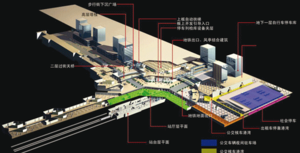

Explosive growth of cities in developing countries, shifting demographics and aging infrastructure in older cities – coupled with the demand for improved liveability and environmental protection – are creating a strong demand for new underground infrastructure.
As this happens, the impact of previously unplanned underground space use rapidly becomes clear – expensive relocations of existing facilities are required, access to favourable geological conditions may be blocked and underground transport facilities are forced progressively deeper to find suitable alignments.
To avoid such problems, planning for urban areas must go beyond the conventional two-dimensional arrangements of surface facilities and consider the full three-dimensional interactions between the built environment and its supporting infrastructure.
The underground as a spatial asset needs to be clearly understood by urban decision makers if it is to achieve its full potential in adapting cities to the many challenges that will be faced in the coming decades.
To know more
- Planning the use of underground space, White paper#2 of the ITA Committee on Underground Space - ITACUS.
- Underground city planning, a french born Concept for Sustainable Cities of Tomorrow.
- Monaco, exemple remarquable d'urbanisme souterrain. Interview in French Of Mr. P. Cellario, Directeur de la prospective de la Principauté de Monaco.
- Condition for the Emergence of an Indoor City by Ray Sterling.
- Think deep, retrospective website of "Enlightenend underground, Festival of underground Space held in Amsterdam, January 2008.
Video
